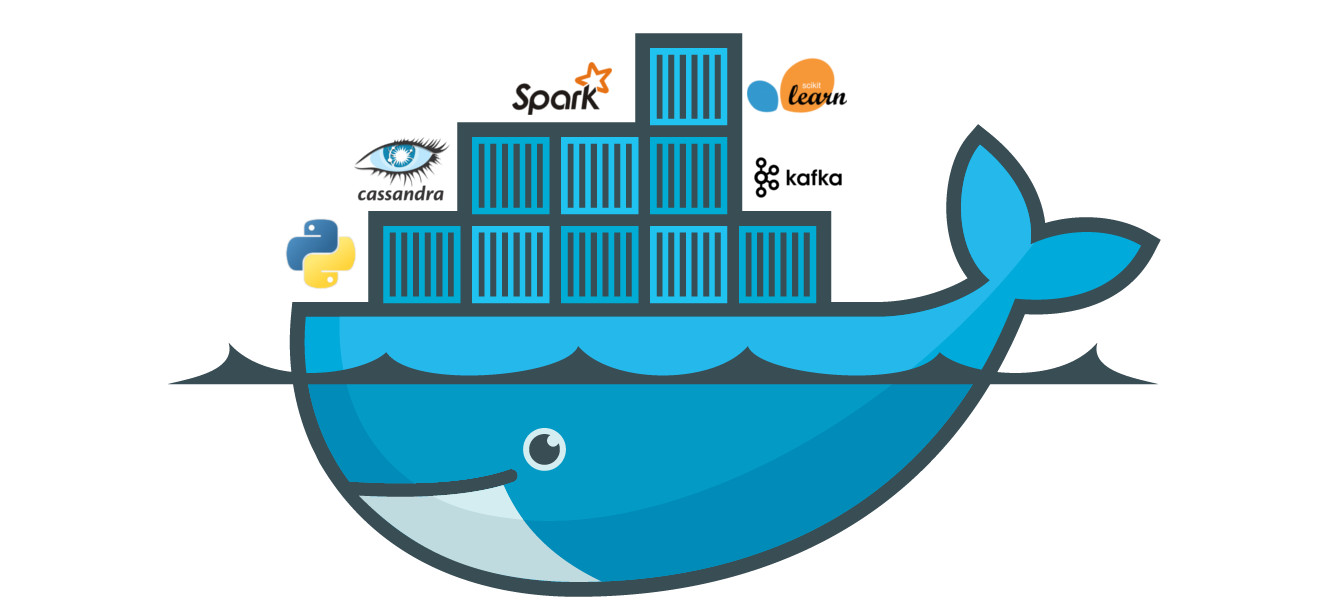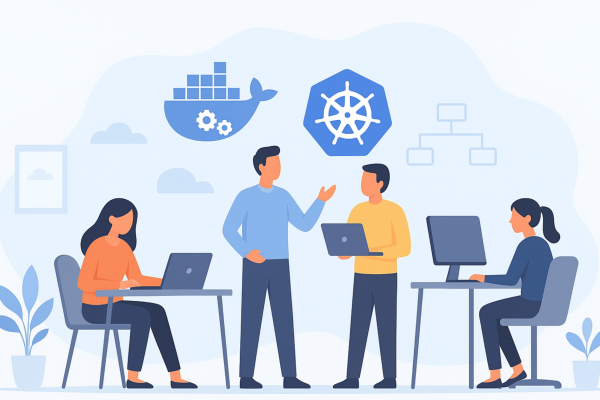Best Practices for Migrating Applications to Docker Containers
In today’s fast-paced software development landscape, Docker containers have emerged as a game-changer, revolutionizing the way applications are deployed, scaled, and managed. As organizations increasingly adopt DevOps practices for rapid development and deployment cycles, the need for efficient containerization and migration strategies becomes paramount. In this comprehensive guide, we’ll delve into the best practices for migrating applications to Docker containers, ensuring a smooth and successful transition.
Understanding Docker and Containerization
Before diving into migration strategies, let’s briefly recap what Docker is and why it’s essential in the DevOps ecosystem. Docker is a containerization platform that allows developers to package applications and their dependencies into lightweight, portable containers. These containers encapsulate everything needed to run the application, including code, runtime, system tools, and libraries, ensuring consistency across different environments.
Containerization offers several advantages over traditional deployment methods, including:
- Isolation: Containers isolate applications and their dependencies, preventing conflicts and ensuring consistent behavior.
- Portability: Containers can run on any platform that supports Docker, from development laptops to production servers, facilitating seamless deployment across environments.
- Scalability: Docker containers can be easily scaled up or down to meet fluctuating demand, optimizing resource utilization and improving performance.
- Efficiency: Containers are lightweight and consume fewer resources compared to traditional virtual machines, enabling higher density and faster deployment times.
With an understanding of Docker’s benefits, let’s explore the best practices for migrating applications to Docker containers:
1. Assess Application Suitability
Not all applications are created equal when it comes to containerization. Before embarking on the migration journey, it’s essential to evaluate the suitability of each application for containerization. Consider the following factors:
- Complexity of Dependencies: Applications with intricate dependency structures may pose challenges during containerization. Evaluate whether the application can be decoupled into smaller, more manageable components or if certain dependencies can be containerized separately.
- Statefulness vs. Stateless: Stateless applications, which do not rely on stored session data or local disk storage, are generally more straightforward to containerize compared to stateful applications. Determine if the application’s state can be externalized or managed through container orchestration platforms to ensure scalability and resilience.
- Architectural Patterns: Assess the application’s architecture to identify potential roadblocks or areas for improvement. Monolithic applications may require refactoring into microservices to fully leverage the benefits of containerization, while applications following the Twelve-Factor App methodology may align more naturally with containerized environments.
By conducting a thorough assessment of application suitability, teams can prioritize their migration efforts and develop targeted strategies to address specific challenges or constraints.
2. Containerize Incrementally
Attempting to containerize all applications at once can be overwhelming and prone to setbacks. Instead, adopt an incremental approach to containerization, starting with low-risk or non-critical applications. This phased approach offers several benefits:
- Risk Mitigation: Containerizing less critical applications first allows teams to gain hands-on experience with Docker and containerization concepts without jeopardizing mission-critical systems. Any challenges or issues encountered can be addressed in a controlled environment before tackling more complex migrations.
- Learning Curve: Incremental containerization provides an opportunity for teams to upskill and familiarize themselves with Docker tools and best practices gradually. As confidence and expertise grow, teams can apply lessons learned to subsequent migrations, improving efficiency and effectiveness over time.
- Iterative Improvement: By breaking down the migration process into smaller, manageable chunks, teams can iterate on their containerization strategies based on real-world feedback and experiences. Continuous improvement is key to refining containerization workflows, optimizing resource utilization, and driving innovation within the organization.
3. Refactor for Containerization
In some cases, applications may require refactoring or architectural adjustments to fully embrace containerization. Consider the following strategies:
- Microservices Decomposition: Break down monolithic applications into loosely coupled microservices to enable independent deployment, scaling, and maintenance. Microservices architecture aligns well with containerization principles, allowing each service to be packaged and deployed as a separate container.
- Dependency Management: Identify and isolate application dependencies to minimize the size and complexity of container images. Utilize tools like Docker multi-stage builds to streamline the build process and eliminate unnecessary dependencies from the final image.
- Configuration Externalization: Externalize application configuration settings, such as environment variables or external data sources, to enable greater flexibility and portability across different environments. Container orchestration platforms can dynamically inject configuration values at runtime, simplifying deployment and configuration management.
4. Define Containerization Standards
Establishing containerization standards and best practices is essential for ensuring consistency and repeatability across your organization. Define guidelines for Dockerfile creation, image tagging, and container orchestration to streamline the migration process and maintain a uniform approach to container management.
When defining containerization standards, consider factors such as:
- Dockerfile Best Practices: Provide guidelines for writing efficient Dockerfiles, including strategies for minimizing image size, optimizing layer caching, and leveraging multi-stage builds to reduce build times. Encourage the use of official base images and avoid unnecessary dependencies to keep container images lean and secure.
- Image Tagging Convention: Develop a standardized approach for tagging Docker images to facilitate versioning, deployment, and rollback procedures. Consistent image tagging practices simplify tracking of image changes, promote reproducibility, and ensure traceability throughout the software development lifecycle.
- Container Orchestration Guidelines: Determine the preferred container orchestration platform for managing Docker containers in production environments. Whether you choose Kubernetes, Docker Swarm, or another solution, define deployment strategies, service discovery mechanisms, and scaling policies to optimize application availability and performance.
5. Automate Deployment and Orchestration
Automation is key to successful Docker migration and ongoing container management. Utilize tools like Docker Compose, Kubernetes, or Docker Swarm for automated deployment, scaling, and orchestration of containers. Automation reduces manual intervention, minimizes human error, and improves deployment speed and reliability.
In addition to deployment automation, consider implementing infrastructure as code (IaC) practices using tools like Terraform or Ansible to provision and configure infrastructure resources required for containerized applications. By codifying infrastructure configurations, you can achieve greater consistency, scalability, and reproducibility across environments.
Furthermore, embrace continuous deployment practices to automate the release process and deliver new features and updates to production environments rapidly. Continuous deployment pipelines enable seamless integration of containerized applications with automated testing, validation, and deployment stages, ensuring consistent and reliable software delivery.
6. Implement Continuous Integration and Deployment (CI/CD)
Integrate containerization into your CI/CD pipeline to automate the build, test, and deployment processes. Leveraging CI/CD tools like Jenkins, GitLab CI, or CircleCI enables rapid iteration, continuous delivery, and seamless integration of containerized applications into production environments.
To maximize the effectiveness of CI/CD pipelines for Docker-based applications, consider the following practices:
- Automated Testing: Implement comprehensive test suites, including unit tests, integration tests, and end-to-end tests, to validate containerized applications at each stage of the CI/CD pipeline. Utilize containerized testing frameworks such as Selenium for web applications or JUnit for Java applications to ensure consistent and reliable test execution within Docker containers.
- Immutable Infrastructure: Embrace the principle of immutable infrastructure by treating containers as ephemeral, disposable entities that can be replaced or recreated on demand. Use tools like Docker image registries and container orchestration platforms to manage versioning, deployment, and rollback of immutable container images, promoting consistency and predictability in deployment environments.
- Blue-Green Deployment: Implement blue-green deployment strategies to minimize downtime and mitigate risks during application updates. By maintaining parallel production environments (blue and green) and gradually shifting traffic from one environment to another, you can seamlessly roll out changes without impacting end users’ experience.
Conclusion
Migrating applications to Docker containers requires careful planning, execution, and ongoing management. By following best practices such as assessing application suitability, adopting an incremental approach, and automating deployment and orchestration, organizations can streamline the migration process and unlock the full potential of containerization.
Embrace Docker as a foundational technology in your DevOps toolkit, and reap the benefits of agility, scalability, and efficiency in modern application deployment. With a strategic approach to containerization, coupled with continuous improvement and innovation, organizations can accelerate their digital transformation initiatives and stay ahead in today’s competitive landscape.
Author







